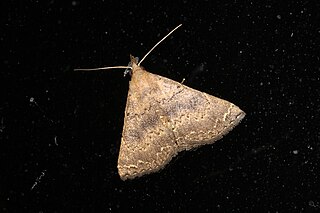Bamra is a genus of moths of the family Noctuidae.

Claterna is a monotypic moth genus of the family Noctuidae erected by Francis Walker in 1858. Its only species, Claterna cydonia, was first described by Pieter Cramer in 1775.

Bamra albicola is a moth of the family Noctuidae first described by Francis Walker in 1858.
Belciana biformis is a moth of the family Noctuidae first described by Francis Walker in 1858.
Brana is a monotypic moth genus of the family Noctuidae. Its only species, Brana calopasa, is found in Sri Lanka and Australia. Both the genus and species were described by Francis Walker, the genus in 1858 and the species in 1859. It It is a serious pest on Berrya cordifolia.

Caduca albopunctata is a moth of the family Noctuidae first described by Francis Walker in 1857.
Calesia rufipalpis is a moth of the family Noctuidae first described by Francis Walker in 1858. It is found in Sri Lanka.

Diomea rotundata is a moth of the family Noctuidae first described by Francis Walker in 1857. It is found in Sri Lanka, the Indian subregion, Taiwan, Sumatra, Borneo, the Philippines and Sumba.
Egnasia accingalis is a moth of the family Noctuidae first described by Francis Walker in 1858. It is found in India and Sri Lanka.

Rhesala imparata is a moth of the family Erebidae first described by Francis Walker in 1865. It is sometimes referred to as an Albizia defoliator. It is found in Sri Lanka, India, Taiwan, Singapore and Borneo.
Saroba maculicosta is a moth of the family Noctuidae first described by Francis Walker in 1865. It is found in Sundaland, the Philippines, Papuan region to Solomon islands and Sri Lanka.
Ctenoplusia fracta is a moth of the family Noctuidae first described by Francis Walker in 1858.
Scriptoplusia nigriluna is a moth of the family Noctuidae first described by Francis Walker in 1858. It is found throughout the Oriental tropics of India, Sri Lanka, Bangladesh, Japan and the South East Asian region.

Aegilia describens is a moth of the family Noctuidae first described by Francis Walker in 1858. It is found in Oriental tropics of India, Sri Lanka, to New Guinea, the Bismarck Islands and Queensland, also on Christmas Islands in the Indian Ocean.

Callyna monoleuca is a moth of the family Noctuidae first described by Francis Walker in 1858. It is found in Sri Lanka, India, China, Japan, Taiwan, Myanmar, Indonesia, New Guinea and Australia.
Avitta subsignans is a moth of the family Noctuidae first described by Francis Walker in 1858. It is found in the Indian subregion and Sri Lanka.
Chrysodeixis permissa is a moth of the family Noctuidae first described by Francis Walker in 1858. It is found in India, Sri Lanka, and the Maldives.
Adrapsa geometroides is a moth of the family Noctuidae first described by Francis Walker in 1858. It is found in Indian subregion, Sri Lanka. to Sundaland and New Guinea.
Hadennia jutalis is a moth of the family Noctuidae first described by Francis Walker in 1859. It is found in India, Sri Lanka, Thailand, Malaysia, Laos, Vietnam, Myanmar and the Andaman Islands.

Progonia oileusalis is a moth of the family Noctuidae first described by Francis Walker in 1859. It is found in Sri Lanka, Borneo, India, Taiwan, Japan and the Philippines.









